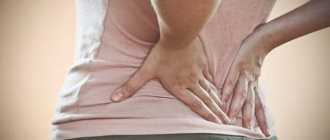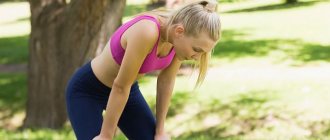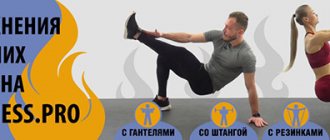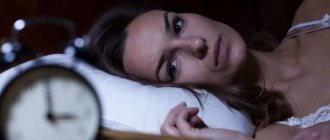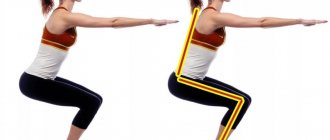Share:
CrossFit is considered one of the most challenging sports for the majority of the population. Phrases like “nausea occurs after training” are often heard in the community or complaints about chronic overtraining of the body are heard. But such an aspect as temperature after training is practically not considered, since such a symptom is considered almost the norm. Is it so? Let's consider this issue in detail.
Why is it cold after sports?
Playing sports involves warming up and is quite intense. Of course, the muscles contract many times more often and with greater amplitude, breathing, and with it the oxidative processes in the cells, accelerates, the heart beats faster, because the muscles require an increased flow of oxygen and nutrients, blood fills the capillaries on the skin, the temperature in the body and grows on its surface. The principle of homeostasis requires maintaining body temperature at a constant level.
To remove excess heat, a person sweats; everyone knows this from their own experience. Evaporating from the surface of the skin, sweat cools the body, warmed up by training. If a person normally produces 400-600 ml of sweat per day, then during intense physical activity the volume of sweat can reach 12 liters! If we consider that the evaporation of each liter is approximately minus 580 kilocalories of heat loss (a hundred-gram milk chocolate bar in terms of calorie content), then it becomes clear why, when the workout ends and excess heat ceases to be generated, we quickly become hypothermic if we do not take measures (primarily shower and dry cloth). Let's talk about nutrition? What does appetite depend on more: the brain or the stomach? Refusal of which food product can dramatically improve my well-being? If some food is healthy, but it disgusts me, this means that my body does not need it, or I have to force it yes? Ask an expert questions
In fact, such energy waste has led anthropologists to question the value of such human adaptations as the absence of fur and excessive sweating. On the other hand, the benefits of a large brain (another human adaptation) from an energy point of view are also not obvious - a relatively small organ consumes more than 20% of the body's energy resources. What now, should we give it up? Well, no, I’d rather go eat a chocolate bar...
thequestion.ru
Krepatura
Causes: delayed onset muscle pain syndrome (delayed muscle soreness) appears 24-72 hours after exercise, if it was more intense than usual, or if you have not exercised for a long time. This syndrome is caused by the formation of microtraumas and metabolic products in the muscles. Krepatura manifests itself in the form of pain throughout the body or in some areas. Some people even experience tremors so severe that they may have difficulty standing up.
What to do? Despite the pain, try to move more and drink plenty of water to help flush toxins out of your body faster. Massage can also be helpful.
Found a violation? Report content
JV.RU - Fitness, health, beauty, diets
© Gettyimages/Fotobank.ru
Coughing during cardio exercise
You think: “My throat is dry. Where's my water bottle?
In fact: this may be a symptom of AS.
What to do: Observe at what point in your workout your throat starts to feel sore. “If your cough typically starts after 20 minutes of cardio, or after your heart rate has risen to 160 beats per minute, or after a 4-5 mile run, be sure to see a doctor,” Perez says. Try not to train in a stuffy, dusty room, in cold air, or near busy roads. “For asthma and other respiratory diseases, it is good to exercise in warm and humid air, for example, swimming or water aerobics,” says Svetlana Veprintseva, personal trainer at TERRASPORT Copernicus, physical rehabilitation specialist, Russian and world champion in sambo.
Headache during strength training
You think: “I’m overtired, I’ll go to bed early today.”
In fact: overwork is the lesser of all evils. “It’s much worse if the cause of the pain is high blood pressure,” says Valery Kramar, a neurologist, consultant at Fizomed. — Its sharp increase can cause serious complications, including dissection of the aorta or arterial vessels. If a person has osteochondrosis of the cervical spine, headaches during strength training may occur when the neck muscles spasm or when you push too hard. To get rid of such problems, you need to treat osteochondrosis: with the help of manual therapy, arthro-devices (they help restore intervertebral discs and joints) and medications.”
What to do: Stop training to measure your blood pressure and pulse. If the indicators are high (upper pressure is above 130, and heart rate is 40% higher than at rest), it is better not to engage in fitness that day. “And in the future we must try to avoid such situations,” says Svetlana Veprintseva. - When performing strength exercises, do not hold your breath, do not take on weights that will force you to push too hard. In a state of stress or nervous excitement, it is better to prefer moderate-intensity cardio training - 20-30 minutes of brisk walking or jogging. If high blood pressure is your usual problem, and you don’t want to completely give up strength training, it’s best to work out individually, notify your trainer about your condition, and give up club strength programs like Pump it up.”
Chest pain during intense exercise
You think, “I have a healthy heart, it just had to work.”
In fact: it’s not for nothing that clinics conduct so-called stress tests on a treadmill and exercise bike, which allow the doctor to identify hidden cardiac problems in a patient - coronary or heart failure. If your heart aches while jogging or a long bike ride, you cannot ignore this symptom. “Of course, it may turn out that these were not heart problems, but, for example, intercostal neuralgia,” says Valery Kramar. “This often happens to an untrained person under unusual load: while inhaling and exhaling, the muscles begin to contract more often, spasm occurs and nerve endings are pinched. However, only a doctor can figure out what caused your condition.”
What to do: stop training and, without panicking, try to determine the nature of the pain. If unpleasant sensations occur with light pressure or movement, if you can feel the sore spot, most likely the problem is in the muscles. But even in this case, you should see a doctor. Seek help immediately if it hurts inside and is severe, you feel dizzy, or it hurts to breathe.
Stitching pain in right side when running
You think: “Normal situation. This also happened in school physical education lessons.”
In fact: “Pain in the right hypochondrium during prolonged aerobic exercise is a completely natural phenomenon,” confirms Svetlana Veprintseva. - This is how the liver, the body’s blood depot, reminds itself of itself. During training, blood flow in the liver increases, due to which it increases in volume and puts pressure on its outer capsule, where there are many nerve endings.” However, this is not the only possible reason, doctors say. The gallbladder may also react to intense, unusual physical activity with a painful spasm.
What to do: the body itself will tell you. Most likely, you simply will not be able to continue training. And as soon as you stop, the pain will subside. If this was not enough, take a few deep breaths and exhalations, lightly massage the liver area and, having recovered, try to return to training, while reducing the pace. If your workout is long over and the pain has not gone away, consult a doctor.
Nausea during abdominal exercises
You think: “I probably ate something wrong.”
In fact: it’s worth remembering not what, but when you ate. You need to eat 1-2 hours before training. If you ate a big meal in half an hour and the food was rough or heavy, it still lies in the stomach. And he will certainly react when you start pumping up your abs. If the last time you had a snack was 4-5 hours before class, you will also feel sick, and from any intense physical activity. Glucose, which is needed by both the muscles and the brain under conditions of intense work, is not enough for “two”, and the matter may end in fainting. Additionally, nausea may be a sign that your blood pressure has risen or dropped during exercise.
What to do: if only half an hour has passed since lunch, it is better to move the abdominal exercises to the end of the lesson or to another day altogether. Didn't have time to eat on time? Right before training, have a light, carbohydrate-rich snack: drink sweet yogurt, eat a few dried fruits, an apple or a banana. As a last resort, drink juice or tea with sugar at the fitness club.
www.jv.ru
Side pain
Causes: short-term pain in the side most often occurs in those people who start running without warming up. Blood flow is increased and directed from the internal organs to the muscles, but this does not happen instantly. As a result, the liver and spleen become overfilled with blood, which begins to put pressure on their walls.
What to do? Stop or try to run slower. Even while running, you can take a breath, press on the painful area and release it as you exhale. Additionally, you should always monitor your breathing while running.
Don't Make These Post-Workout Mistakes
The training process takes a lot of time and energy. If you have a busy work schedule, you are forced to sacrifice a lot to the detriment of your own well-being. Try not to make these mistakes after your next workout, and your body will definitely thank you.
Staying in wet clothes after completing classes
Wet, sweat-soaked clothing is unpleasant from a purely aesthetic point of view. But this can also lead to some serious problems. If you go out into the wind in wet clothes, you will be caught in a draft, and you can't avoid catching a cold. Frosty air also has its negative consequences. Wet clothing stimulates hypothermia, and this, in turn, weakens the immune system. Well, with prolonged contact with sweat-soaked fabric, the skin can become covered with acne.
Take a spare set of dry and clean clothes with you to training. It will be better if after class you take a shower and then change clothes. But this is only if time allows you.
“Reward” in the form of high-calorie food after training
Your biggest mistake after training is eating desserts and other gastronomic pleasures of life. Just think about these numbers: you burned 250 calories during the workout, and with a piece of cake as a “reward” for your work, you gained back 400. If you are too hungry after exercise, choose healthy snacks as an alternative. The energy value of your snack, consisting of proteins and carbohydrates, should not exceed 150 calories.
You roll up the gymnastics mat until your next class.
You probably won't wear a sweat-soaked bra to your next workout. So why don't you give your rug a chance to dry thoroughly? Keep in mind that dark, damp areas in the roll are breeding grounds for bacteria. After classes, wipe your mat with a napkin or special cloth. Then hang the item on the railing to dry.
Drinking sports shakes after training
A 330 gram sports drink contains the same amount of calories. If you drink this post-workout, it's the equivalent of eating pistachio ice cream with peanut butter. Remember that these drinks are designed for marathons and other intense activities. There is no need to resort to cocktails if not much effort has been expended during the workout.
Pay attention to the good old and proven method. Half an hour before class, hydrate your body with drinking water. Low-calorie coconut water will help replace lost electrolytes.
You touch your face
When you exercise in public, you always sweat. Dozens of other yoga or fitness lovers are doing the same thing at the same time as you. In the gym, you use shared tools and exercise equipment, and touch doorknobs and bathroom faucets. And everywhere you can easily pick up another batch of germs. This is why your hands should not touch your face. Otherwise, you can immediately purchase gauze bandages and antiviral drugs.
Make a certain effort on your consciousness and forbid yourself to touch your face. To further protect yourself from bacteria, you can take a towel and wet antibacterial wipes with you from home. Wipe off sweat from your body whenever possible, and don’t forget to wash your hands after finishing your workout.
You are missing a block of recovery exercises
After each workout, the body needs time to recover and stretch. Your heart rate should slowly return to its normal rate. Stretching prevents muscle pain and the risk of injury.
If you need to reduce your training time and make sacrifices, your body needs to cool down and stretch out. Just increase the intensity of the actual load. There is also this way out: get to the gym 15-20 minutes before the scheduled time.
fb.ru
why does exercise cause nausea, what to do
Nausea during training causes vomiting and urge. Negatively affects the process of physical activity of the athlete. The urge to vomit occurs with pain and poor health.
Primary causes of nausea:
- Incomplete digestion of food. The athlete ate food before training that was fatty and took a long time to digest.
- Dehydration of the body, water imbalance. Constipation occurs and causes nausea.
- Overheating of the body as a result of stress. Body temperature rises, sweat comes out, and a lack of fluid occurs. The result is heatstroke.
- Dysfunction of the blood supply to the stomach and intestines, diarrhea.
- Lack of blood sugar is accompanied by chills and convulsions.
- Destruction of muscle tissue.
- Accumulation of lactic acid in the body.
- Heart diseases.
Nausea after running
During leg training, after sports they feel discomfort in the stomach, accompanied by nausea. The reason is the changed marathon program, breaks in exercise, alcohol consumption, and increased blood pressure.
Symptoms are felt when squatting with a barbell. The pressure drops due to the outflow of blood. The heart rate increases, tachycardia occurs, tinnitus, and spots in the eyes. The athlete sweats a lot. Those involved in sports make a mistake without suspecting anything - they breathe through their chest. You can reduce the urge by using abdominal breathing. The diaphragm must work. You shouldn’t force the body and exhaust it through nausea.
Nausea when running is caused by high running speed. Breathing becomes harsh and difficult, the temples pulsate, the legs become tangled, and the person loses coordination. It is advisable to gradually increase the load. Alternate between walking and running, then increasing the running and decreasing the walking. The athlete must be comfortable running, making arm movements, breathing, and talking. If you start to feel nauseous, take a brisk walk; if you feel better, increase your running.
If you feel sick after the gym
Pause your workouts at the gym to avoid making the situation worse. Lie down and drink some water. Regulated breathing will help correct the situation. Take the first deep breath before the exercise, and take subsequent breaths in the upper region. Exhale as much as possible until your pelvis rises. Do not hold your breath to avoid loss of consciousness.
Before loading, the athlete must warm up properly. It will help disperse blood throughout the body and warm up the muscles. Change your daily routine and diet.
Required conditions:
- full and healthy sleep 8 hours;
- include carbohydrates, vegetables and fruits in the diet;
- on sports days you cannot eat fried or smoked meat;
- start training two hours after eating;
- when exercising, consume natural chocolate in moderate doses – it will add energy and tone;
- consume low-fat dairy products.
By following simple rules, you will be able to forget about nausea and vomiting and enjoy the process of training for the benefit of your health. Going to the gym is a healthy habit. During physical activity, the muscular core of the body is strengthened, both external and internal muscles are trained, blood flow increases, and cells are saturated with oxygen. With the help of sports you can lose excess weight.
Carry out loads in moderation. The trainer selects an individual exercise system and the appropriate load. In case of problems of various nature with health and deterioration of well-being during or after training, it speaks of an incorrectly selected, set program of exercises and activities. Reduce the load.
It’s easy to overtrain in the gym and you’ll feel nauseous. Men are susceptible to this consequence. Guys dream of a pumped up body with definition, they try to lift weights and increase the load as much as possible. A stress hormone is produced that causes vomiting. You need to exercise up to four times a week.
Eating food before training causes urges, long-term eating (5-6 hours before training) causes oxygen starvation of cells, rumbling in the stomach, and nausea. When dizziness occurs, nausea and pain occur. Sports fans work and don’t have time to satisfy their hunger. A protein shake will reduce the risk of nausea. Drink it an hour before training. Protein will be quickly absorbed and will not cause discomfort.
Breathing is important during training. Improper inhalation and exhalation causes migraines, weakness, and the urge to vomit. Completely review your training technique. You will have more strength and endurance, and your workouts will be enjoyable. Medicines cause side effects such as vomiting. During training, the heart works hard and performs a serious, difficult function. The vessels dilate. After training, the heart rate normalizes, the blood vessels do not decrease in size. Nausea and dizziness occur.
Eliminating nausea
An easy way to eliminate nausea and migraines in the gym is to lie in a position so that your head is higher than your heart. Thanks to this method, the blood vessels will narrow and the urge will pass. Eat an apple, a banana. The cause is considered to be dehydration and lack of microelements. For example, potassium and magnesium. It is worth starting to take multivitamin complexes. The course of treatment is two to three months.
It is recommended to drink water with lemon, mint, and eat mint candy. If vomiting occurs every day, your head may feel dizzy, and you often feel pain, this is a reason to consult a doctor. At the first symptoms, when you feel unwell, stop exercising, stop the exercise equipment, and sit down. A method that will help is to lie down and raise your legs up. After relief, go in for sports. You need to do the exercise more calmly, less intensely.
Signs of hypoglycemia:
- weakness;
- trembling in the body;
- dizziness.
It is recommended to relax and unwind. It is worth eating bakery and confectionery products containing sugar. Will raise blood sugar levels. Follow the advice - do not overeat, eat two hours before training. Drink a moderate amount of water, without creating excess or deficiency. If nausea reaches vomiting during training, this is the body’s reaction to exercise overload. You need to stop urgently, reduce the amount or intensity.
On the day of class, you should not indulge in fatty, heavy or spicy foods. Warm up before exercises, and then simply stretch the muscles at a calm rhythm. Allows the body to adapt more easily. It is important to get enough sleep and follow a daily routine, and get more rest. Half an hour after training, a glass of low-fat kefir will be useful. Products containing protein will help overcome the urge to feel sick.
During increased stress, the liver increases in size, resulting in pressure and nausea. After physical exercise or exercise, it is recommended to drink water in small sips.
Go to the doctor if:
- when the urge to vomit does not go away within a couple of hours after exercise;
- vomits constantly, while running, regularly;
- body temperature has increased, acute abdominal pain occurs, stool disturbances;
- Nausea at any time except training.
For a healthy human body, physical activity should not be overshadowed by ailments and discomfort. The body blocks natural functions after exercise. For isolated, one-time urges, remove symptoms. It will become easier for a short period of time. In case of prolonged nausea, medical attention is required and examination is possible.
gastrotract.ru
Dehydration in Runners: Causes and Consequences
When you run, you sweat. When you sweat, you lose water. Like all athletes, you replenish your supply with water or recovery drinks. But can you drink enough water to stay hydrated on hot days with high humidity? It turns out not. At the same time, dehydration or dehydration threatens not only an unpleasant feeling of thirst, but also a significant decrease in performance. Why does this happen and how to get rid of it?
When you run in hot, humid weather, you lose fluid at a rapid rate, faster than you can replace it. The longer you exercise, the more water deficit your body becomes, and it doesn't matter how much water you drink during or after your workout.
To understand how dehydration affects your running performance, you first need to understand what happens to your body when you run in heat and humidity.
Temperature and blood volume
During exercise, your body tries to maintain an optimal temperature and pumps blood to your skin to keep you cool. Meanwhile, your muscles generate heat as you convert your body's natural fuel into energy for running.
The hypothalamus detects an increase in temperature and activates the sweat glands. The water that helps cool the body, called sweat, is released and evaporated, taking moisture from the body, so the end result of this process is a decrease in blood volume.
Simply put, this state of the body can be called “thickened blood.” At the same time, your muscles need a lot of oxygen to function. More oxygen means more blood flow to the muscles.
When you put all these facts together, your blood is thickened because you sweat and less blood flows to your skin and muscles. The body has less and less ability to cool itself and deliver the required amount of oxygen to working muscles.
What does the heat and humidity have to do with it? On hot days, you sweat more, and on days with high humidity, your sweat “cooling system” works less efficiently because moisture in the air prevents sweat from evaporating from the surface of your skin.
When blood volume becomes smaller, the body tries to conserve fluid and reduces sweat production and blood delivery to the muscles. This can cause your muscles to work less well and may even cause you to develop a fever on a hot day. If you feel chills, you should stop training immediately.
Rate of water loss: more than you can replace
On very hot and humid days, a runner can lose about 1.5-2 liters of water in one hour. Some of this amount can be replenished by drinking water during exercise, but in any case, your stomach can only absorb 180-210 ml of water every 15 minutes. At this rate, you can only replenish 720-840 ml per hour, which is much less than the lost 1.5-2 liters. And if you lose so much water every hour, dehydration sets in.
And the longer you exercise, the greater the water deficit. Imagine that on a hot day you lose 1.5 liters every hour. Even if you drink a liter every hour, your stomach will only be able to absorb about 800 ml (and the rest will hang around in your stomach while you run). So you will be left with a deficit of 200 ml of water every hour. In two hours, the deficit will already be 400 ml, and most likely more, because during training you will not drink one and a half liters every hour.
At this rate, you will lose 1.5 liters of water in a four-hour marathon, which is a significant number.
Dehydration reduces results
Studies on the effects of dehydration in competitive sports have shown that for every percentage point of weight loss from dehydration, you are 2% slower.
For example, if an athlete weighs 56 kg and sweats about 1.3 kg per hour, in two hours she will lose 2.6 kg, which is about 5% of her body weight. This 5% worsens her performance by 10%, and if before that she could run 2 km in 10 minutes, after two hours of running her performance will deteriorate by 1.2 minutes.
Of course, you can replenish the water supply, but the losses will still be too great and the indicators will deteriorate by a certain percentage.
Preparation and recovery
You can't avoid losing water while running, but you can reduce your deficit by getting enough water before your workout and by recuperating during and after your workout.
- Before training, drink at least 1.5-2.5 liters of water throughout the day, especially in the warm season.
- At least an hour before training, drink 0.5 liters of water.
- During training, try to drink 200 ml (1 glass) every fifteen minutes, even if you don't feel thirsty.
After training, it may take you a day or two to fully replenish your water supply. Remember that your body can only absorb about 800 ml of water per hour, and if you have lost 1.5-2 liters or more, it will take several hours just to absorb that amount of water, not to mention the fact that few people will drink two liters of water in one evening.
In addition, not all of the water is absorbed, because some is excreted in the urine. Therefore, you need to continue to drink regularly after running in order to replenish the losses before your next workout.
lifehacker.ru
Icy belly
Reasons: During training, more blood enters the muscles than the internal organs. They produce a lot of heat, which escapes through the skin. This is why your stomach may feel a little cold to the touch.
What to do? This is a normal physiological reaction. Once you finish your workout, this feeling will disappear.
Sagittarius can get married. Why summer 2020 will be special for zodiac signs
The brave Natasha from “Strong Armor” is unrecognizable as Zhenya from “Daddy’s Daughters” (photo)
A new habit in 21 days: how quickly everyone’s coronavirus depression will go away
My body gets chills after workout 2020
My Body Gets a Chill After a Workout
Chilling after a workout is fairly normal as your body's processes try to maintain your core temperature. As a warm-blooded mammal, your core temperature remains relatively constant at about 98.6 degrees. Moving this amount up or down to a certain extent requires special circumstances, such as illness or extreme temperatures. However, wearing inadequate clothing in cooler temps, dehydration and low blood sugar can make you feel cold after a workout.
Video of the day
Good cooling
Cooling down after exercise is beneficial as it gradually lowers your body temperature and regulates blood circulation. It can also reduce muscle soreness and cravings. A sudden drop in body temperature can lead to chills and possibly hypothermia. To cool down properly, continue your workout, but gradually reduce the intensity and speed over 5-10 minutes. For example, to cool down after a brisk walk, walk slowly for 5 to 10 minutes. If you're running, take your time with a brisk walk to cool down. After cycling, spin at higher rpm with low resistance. Also stretch your muscles afterwards to slow the flow of blood through your body and reduce the risk of injury.
Proper clothing
Wearing proper clothing can prevent chills during and after exercise. Packing your clothes, especially in cold weather, is important to prevent hypothermia. Layers trap the warm air closest to your body, keeping you insulated. As you warm up, you can remove a layer to prevent excessive sweating, which can be dangerous in cold weather: After a workout, your wet clothes will become cold, which can cause your body temperature to drop too quickly. Also note that cotton fibers tend to retain water, so choose clothes that dry quickly. Top your layers with a windproof shell and a hat and gloves if the weather is cold.
Hydration
What you put in your body before your workout can play a role in how you feel after your workout. Water is extremely important for regulating body temperature; failure to do so can result in chills, nausea, dizziness and seizures. MIT recommends drinking 16 ounces the night before a race
www.thehealthypost.com
- Stretching restrictions and contraindications
- What are the warmest women's shoes for winter?
- What is a gto site
- Gluteus minimus and gluteus medius muscles
- Healthy lifestyle movement
- Bastard of Robert Baratheon
- Women's weightlifting photo
- Maximum speed developed by man
- Triceps exercises for women
- Pull-up technique on the horizontal bar
- Beautiful photos of a black woman
Dizziness
Causes: sudden outflow of blood to the legs or overheating.
What to do? Be sure to warm up before your workout and stretch after. You should also rest between workouts as needed. To prevent fainting and possible injury, you should sit down as soon as you feel unwell, or even lie down, to allow blood to flow back to your head.
Project of a house-hotel surrounded by nature with a bright interior: 10 photos
Andrei Makarevich’s new wife used to wear dreadlocks (see her photographs)
Buckingham Palace and other famous places: what their “wrong side” looks like
